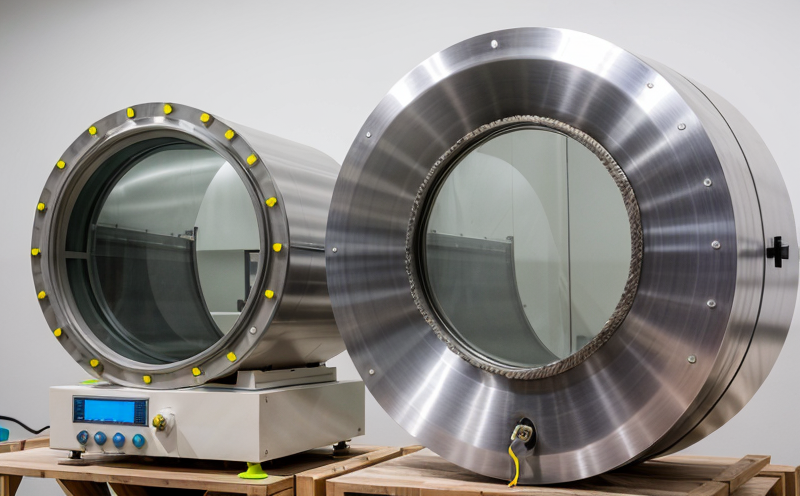ASTM C1842 Evaluation of Polymer Composites for Radiation Shielding
The ASTM C1842 standard provides a method for evaluating the performance of polymer composites in radiation shielding applications. This service is particularly valuable for quality managers, compliance officers, R&D engineers, and procurement professionals who are involved with materials that must withstand high levels of ionizing radiation.
The ASTM C1842 procedure focuses on determining the effectiveness of a given composite material in attenuating various types of radiation including gamma rays, x-rays, and beta particles. This is critical for industries such as nuclear power, medical imaging equipment manufacturing, space exploration, and any industry dealing with radioactive materials.
The evaluation involves a series of tests designed to measure how effectively the composite can shield against these forms of ionizing radiation. The process starts by preparing homogeneous specimens of the polymer composite according to strict ASTM guidelines. Once prepared, these specimens are subjected to controlled exposure to gamma rays and x-rays using calibrated sources.
During this phase, the intensity of the radiation before and after passing through the specimen is measured accurately with a high-resolution spectrometer. The difference in intensity provides an indication of how well the composite has shielded against the radiation. This data is then used to calculate the attenuation coefficient, which quantifies the shielding performance.
The testing also includes evaluation under different conditions such as varying thicknesses and environmental factors like temperature and humidity. These variations are crucial for understanding how real-world conditions might affect the material's performance over time. The results of these tests are documented meticulously and reported to ensure transparency and repeatability.
ASTM C1842 is widely recognized in the industry as a benchmark for evaluating radiation shielding materials, particularly polymer composites. By adhering strictly to this standard, laboratories like Eurolab can provide reliable and consistent results that meet international quality standards.
Applied Standards
| Standard | Description |
|---|---|
| ASTM C1842 | This standard specifies the procedure for evaluating polymer composites for radiation shielding using gamma rays and x-rays. |
| ISO 9001:2015 | An international standard that sets out the requirements for a quality management system to ensure consistent production of quality products. |
| EN ISO 17025 | A European standard used by testing and calibration laboratories, ensuring they meet certain criteria related to technical competence. |
The application of these standards ensures that the evaluation process is rigorous and aligned with global best practices. This not only enhances confidence in the results but also facilitates interoperability across different regions and industries.
Eurolab Advantages
At Eurolab, we pride ourselves on providing unparalleled expertise in radiation shielding materials testing using ASTM C1842. Our team of highly skilled professionals ensures that every test is conducted with precision and accuracy.
We have state-of-the-art facilities equipped with the latest technology to perform these evaluations effectively. This includes high-resolution spectrometers capable of measuring even minute changes in radiation intensity, ensuring precise data collection.
Our comprehensive approach extends beyond just testing; we also offer detailed reports that provide insights into the performance characteristics of each composite tested. These reports are invaluable for decision-makers looking to optimize their materials or comply with regulatory requirements.
In addition to our technical expertise and advanced equipment, Eurolab is committed to maintaining the highest levels of quality assurance through continuous training and certification updates. This commitment ensures that we remain at the forefront of radiation shielding research and application.
Environmental and Sustainability Contributions
The evaluation of polymer composites for radiation shielding using ASTM C1842 not only serves to enhance safety in various industries but also plays a role in promoting sustainability. By identifying the most effective materials, we help reduce reliance on heavier metals traditionally used for shielding.
Lighter and more efficient materials mean less energy is required during production and transportation, contributing positively to environmental impact reduction. Furthermore, these composites often offer better thermal conductivity properties which can lead to improved efficiency in cooling systems within nuclear facilities or medical imaging equipment.
The findings from such evaluations contribute significantly towards reducing the overall carbon footprint associated with radiation shielding solutions while maintaining high levels of protection and performance.





